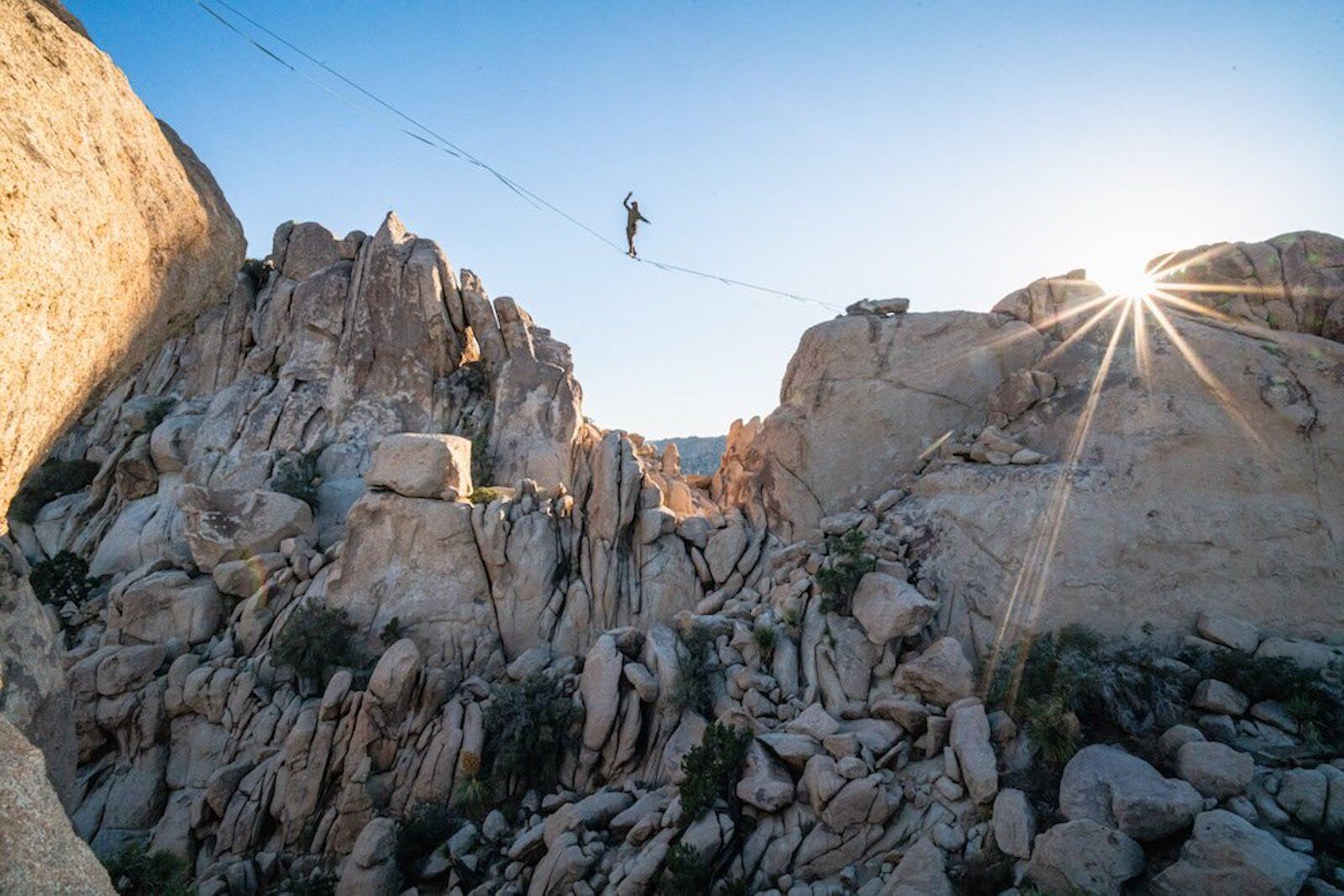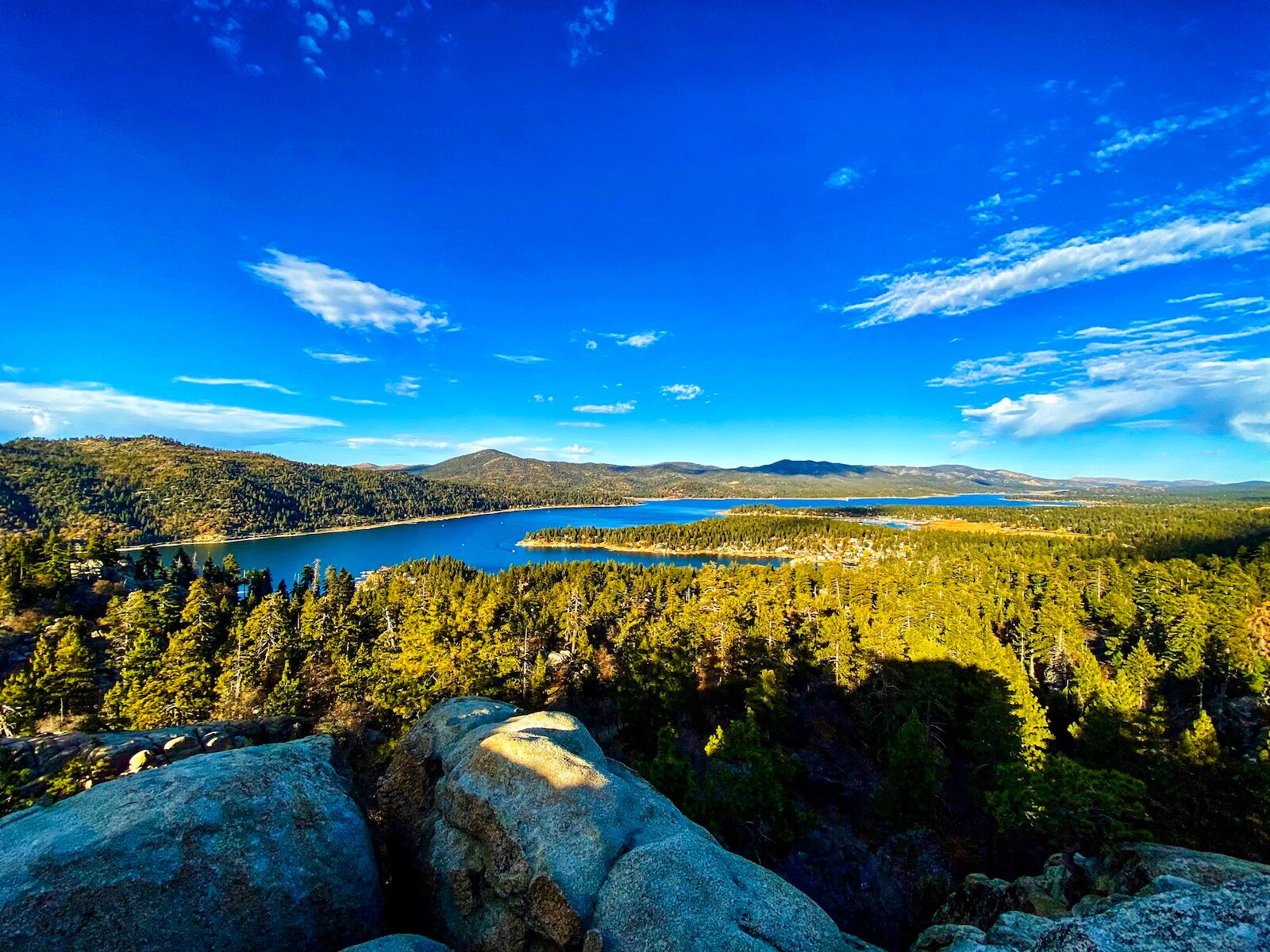Tucked away in the southeast corner of California are 27,000 square miles of overshadowed land that other states would tout as their main adventure destination. There is no debate that California reigns supreme as the outdoor adventure hub in the lower 48, so it’s no wonder that places get overlooked, but this neglected adventure hotspot, claiming 16% of California’s landmass, is home to rock climbing, skiing, National Parks, glamping, kayaking, hot springs, boating, hiking, fishing, desert bathing, photography, off-roading… Feel free to catch your breath and process that shortlist of what the Inland Empire offers its visitors.

The Inland Empire Is California's Underrated Outdoor Adventure Hotspot
Planning an outdoor adventure road trip around the Inland Empire
The eastern boundary of this massive swath of land stretches from Riverside in the northwest to Temecula in the southwest. Drawing two straight lines across the map eastward until you run into the state borders of Nevada and Arizona, you now have the boundaries of the Inland Empire. Within this landscape, there are 13 endangered animals, two mountain ranges, a very salty lake, a couple of forests, two deserts, and countless Joshua Trees lining the dirt backroads. The Inland Empire is overwhelmingly big —
so, where do you start?
Getting to and around “the” Inland Empire

Photo: Dalton Johnson
When picking flights, snag yourself a window seat to gawk at the Pacific Ocean as you fly over Los Angeles into “the” Ontario airport. Now that you are in Southern California it’s time you learn a little bit of the local lingo. You’ll start to pick up on the overuse of “the”; the highway number, the hotel name, the rock climbing spot, etc. Head to your preferred car rental and grab your road-tripping vehicle. Make sure to select a capable ride that also has decent mileage so you can explore the Inland Empire without breaking the bank.
From the Ontario airport, stay your first night in the outskirts of Riverside so you can wake up early and hike San Gorgonio Peak, the highest point of the Inland Empire and Southern California.
Tips for a great hike up San Gorgonio Peak:
- Mentally prepare for a long day, 18 miles round trip, and 5,000 feet of vertical gain
- Pack at least two liters of water and snacks
- If you are feeling ambitious, try to reach the summit for sunrise for 360-degree views of the LA area. You can backpack in the area if you can snag a permit, which allows you enough time to watch the sunset from the summit.
- Use sunscreen, it’s easy to get sunburnt here even on cloudy days
I haven’t seen the big bear, but the lake is dreamy

Photo: NikTheMechanic/Shutterstock
Once you have had enough city life and are ready to escape to a mountain paradise, hop on the 215 to the 18 for fifty miles to reach Big Bear. This dreamy lake destination in the Inland Empire got its name from a grizzly bear population that was eradicated in 1845 and is now home to a small, and typically unseen, black bear population. Big Bear has boomed in popularity extending beyond ski season into summer. During the summer months, Big Bear is a destination lake for residents around the Los Angeles area to escape the heat and cool off while splashing around in kayaks, fishing, or stand-up paddleboarding.
While many recognize Big Bear for the skiing and lake access, Big Bear offers hikes that overlook the evergreen landscape surrounding the azure lake leaving you with a visceral feeling, especially at sunrise or sunset. So, pack your boots and camera, because, who knows, you might be lucky enough to spot one of the black bears eating berries or a cotton candy sunset. Several of the hikes around Big Bear are in the 30-minute to 2-hour range, so you can easily stack a few hikes into a single day. If you are in search of a Big Bear experience different than most, come during the shoulder season. During autumn and spring, Big Bear has fewer visitors and is often filled with colors from either spring flowers or fall foliage.
A few places around Big Bear you don’t want to miss:
- Pine Knot should be on your beach list and the perfect spot for a kayak. You can rent kayaks around town or head to the marina so you do not have to fumble around with transporting a kayak in your rental car.
- For a stellar hike, the 2.7 miles out and back on Castle Rock Trail offers a grand view of the lake and surrounding area.
- Rock climbers head to Castle Rock to test your trad placements or Holcomb Valley Pinnacles to clip some bolts
- Where to stay: Big Bear is more developed than the rest of this road trip and boondocking isn’t advised. Make sure to book your campsite next to the lake well in advance or find a cute cabin in the woods.
The place where two deserts meet

Photo: Dalton Johnson
The Inland Empire is home to two deserts, the Mojave and Sonoran deserts. To properly experience both tack some miles onto the odometer and drive a loop around the northeast region of the Inland Empire. Throughout this loop, you can visit the southern parts of Death Valley National Park, folic in vast desert landscapes without another soul around, camp for free under the stars on BLM land, hike in the Mojave National Preserve, and wander the lands where a giant sloth used to roam, Joshua Tree National Park. If you go clockwise through the desert, you’ll surely be a little bit tired, so before your head nods while you drive, snag a coffee at Joshua Tree Coffee Roasters and head into the national park for some adventure.
Joshua Tree National Park contains the convergence of both deserts which can be seen along with Joshua trees and the Cholla Garden. At first glance, Joshua Tree appears to be extraterrestrial, but it’s full of rock climbers, highliners, hikers, influencers, van lifers, gray nomads, and road trippers. It’s also an epic place for stargazing. This mix of granite mounds and desert attracts all kinds of humans from a wide breadth of backgrounds. So, if you are looking for a stellar adventure in the place where two deserts meet, make sure to stop in at Joshua Tree.
Must Visit Places in Joshua Tree National Park
- Intersection Rock is steeped in folklore from the Stone Monkey rock climbers and is the epicenter of the park. Snag a campsite here and you can launch into any activity quickly from this junction.
- Skull Rock is a roadside attraction often swarming with influencers at sunset, but there are better spots to capture that perfect photograph. Cholla Garden or the Hemingway Buttress are more stunning landscapes, but a longer hike.
- Where to stay: You have three options. First, there is free camping on BLM land outside of Joshua Tree National Park, but the commute into the national park from the BLM land will cost you the same as a campsite inside the park, so snag a campsite if the dirtbag climbers aren’t there already. Your third option is to stay in a Joshua Tree Airbnb or hotel. For the best vibe, Autocamp is my choice as you stay in Airstreams just outside the park.
Note: If you are familiar with California deserts, you would refer to the Sonoran Desert of California as the Colorado Desert, a specific sub-desert of the Sonoran.
Coachella Valley is not only for festivals

Photo: Felipe Sanchez/Shutterstock
While Coachella attracts a crowd ready to dance and Stagecoach brings the cowboys and cowgirls, Coachella Valley offers way more adventure than it does festival life. Maybe hard to believe, but the warm weather of Coachella Valley is another massive area that contains Palm Springs, an endangered family of big horn sheep, the northern section of the Salton Sea, and the rock climbing have Lynn Hill claimed as “her favorite climbing place” the Tahquitz mountains. So, you can believe this is an ideal spot to winter over while the rest of California’s outdoor destinations are under snow.
What to do in Coachella Valley:
- Find and photograph the Bighorn sheep, they are typically spotted around the winding hill climb of Highway 74 to Coachella Valley Vista
- If golf is your thing, Coachella Valley is home to 124 courses, so don’t forget to pack your clubs and polo shirt
- Rock climbers can cut their teeth in Lynn Hill’s favorite stomping grounds, Tahquitz
- Where to stay: When in Coachella Valley park your van at Caliente Springs Resort for a night of hot spring soaking and warm showers to clean up before you head back to the city to finish your trip
- Check out Matador’s guides to hiking in the Coachella Valley and the best hotels in Coachella Valley
Don’t forget to look up at night

Photo: kesterhu/Shutterstock
As you leave the Los Angeles area behind, be sure to look up at night. If you have a clear night, your eyes will adjust and the city glow will fade into the Milky Way. Stretching across the night sky throughout the Inland Empire, the night sky is a main attraction for astrophotographers and city slickers looking to set their eyes on Orion, Cassiopeia, Ursa Major, and so many more constellations residing in the northern hemisphere skies.
Tips for capturing astrophotography:
- Find a spot far from light pollution that ideally has rock formations you can stand on
- Bring a tripod and mirrorless camera or use a current iPhone with night mode
- Find the Milky Way core, this changes throughout the year
- Snap photos by trial and error, try different landscapes and angles
- Attempt to put a person in the frame, hence the first tip, make sure they hold steady
- Where to stay: Throughout this road trip, access to free camping on BLM Land is omnipresent. Your best bet for up-to-date information is to download iOverlander and head to the nearest spot. Pro tip, download your maps to the locations so you can access them offline